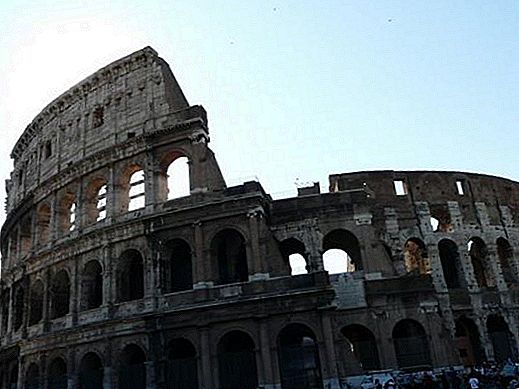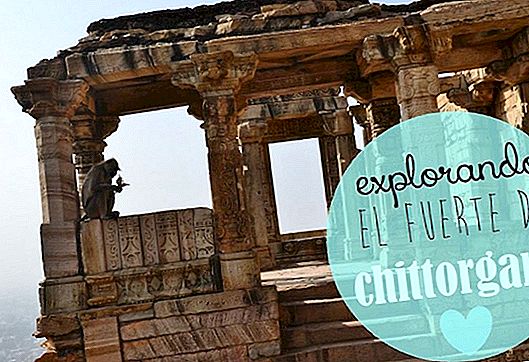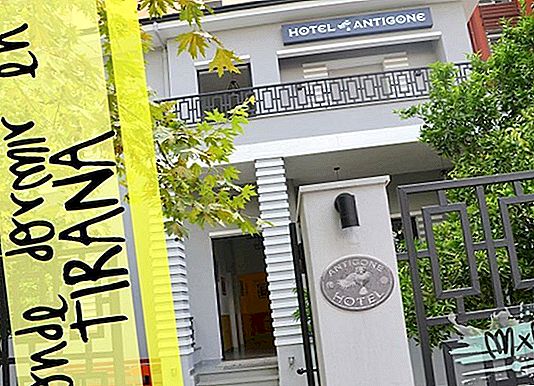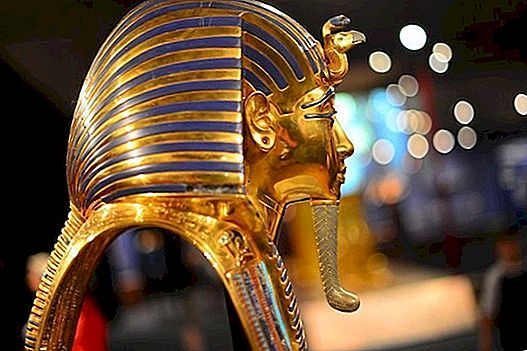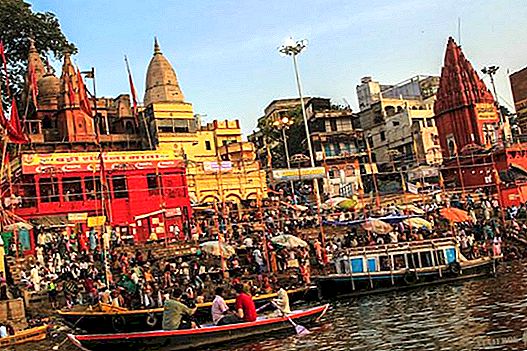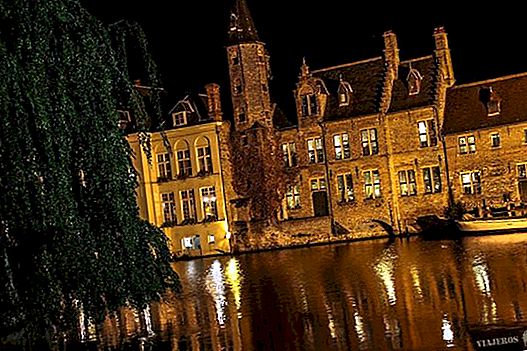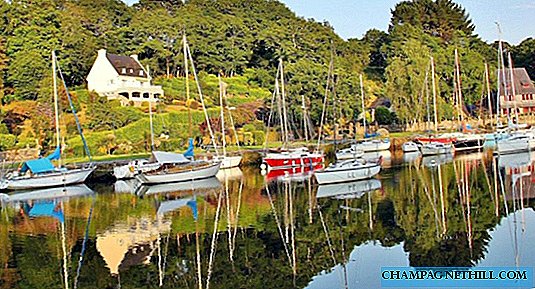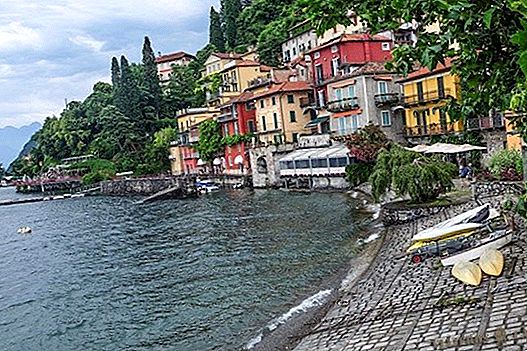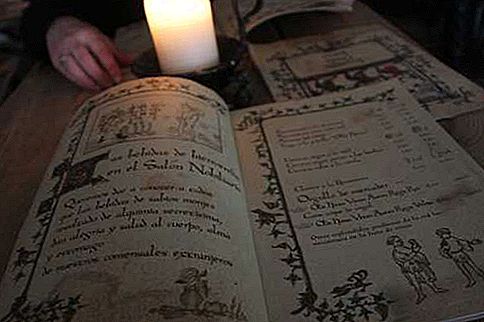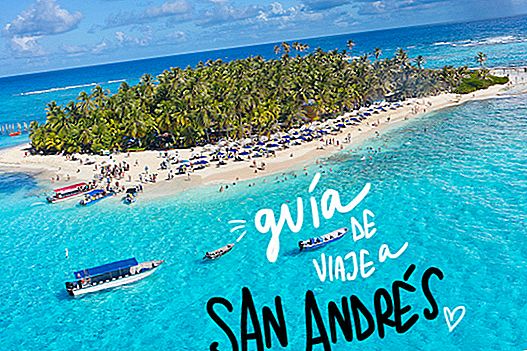
The island of San Andrés is, next to Providencia, an ideal beach destination for those who want to end their trip through Colombia in style. Although its location is somewhat away from the coasts of Colombia (it is closer to Nicaragua, in fact) and you should arrive on a flight, we recommend your visit both for its landscapes, as for its beaches, its sea of 7 colors, its traditions unique in the world and its gastronomy. Here we leave you one travel guide to San Andres Island, with lots of useful information to plan your visit for free.
These two islands in the middle of the Caribbean Sea have spent almost all of their lives uninhabited. Until the arrival of Christopher Columbus and the Spaniards, who took possession of them there by 1502. But no one had the courage to stay. The first European populations to settle were from England and the Netherlands more than 100 years later. At that time they had a famous neighbor: Pirate Morgan, who used them to hide the treasures and wealth that plundered the Spanish colonies in the New World.
Subsequently, control passed again to Spanish hands, and remained so until the independence of Colombia. Specifically, this territory was largely liberated thanks to the French privateer Luis Aury who took the islands and handed them over to the cause of Simón Bolívar's troops. San Andres and Providencia joined Colombia in the years 1822 and 1823, and is currently the only department formed by islands in the country.
In recent decades there have been complaints by Nicaragua and claiming the sovereignty of this territory, although none are fruitful.
The really interesting thing about the history of these islands is their original inhabitants: the roots. It is a community of African ethnicity from the slave trade from Africa to the American continent, during colonial times. They have maintained a unique and different culture from the rest of the country, in this way they are followers of the Baptist church, they have particular traditions and even use their own language: the Creole Creole, which is a mixture of English, African and Spanish languages. If you find native islanders who speak it, take the opportunity to stop and listen for a little while because it is very curious!
The island of San Andrés is neither more nor less than about 800 km from the north coast of Colombia, in fact it is much closer to Nicaragua, just 220 km. To arrive therefore we have no choice but to do it By plane. There are direct flights with several companies (Latam, Avianca, Viva Colombia ...) and from different destinations (Medellín, Cartagena, Bogotá ...). The price of the flight is maintained over 50€. We arrive from Medellín with Viva Colombia (€ 43 with reservation at lastminute.com) and we went to Cartagena with Latam (€ 39 booking in budgetair.es). Both flights are found with the comparator Skyscanner and we reserve them with a month and a half advance approx.
From the airport, depending on where your accommodation is, you can take a taxi or walk. We stayed in downtown San Andres and went on foot.
To get to Providence The ideal is also a flight, in this case there are only direct flights with San Andres. The option of the ship also exists, although we have been told that it can be quite hard for those of us who suffer with the sway of the sea.
To enter these islands it is necessary to pay an entrance fee of 112.000$ (in 2019). It is a tourist tax that is theoretically intended to improve infrastructure on the island and social projects. We, after taking a few quick calculations, had the feeling that little of what they collect truly ends where it should (eye, we do not accuse anyone, it is our way of thinking, and after talking with other tourists and locals, that of many others) . The tourist card that refers to this rate must be collected and paid at the airport of departure. We paid it at the counter of the airline when checking in, and we could only pay in cash.
The island of San Andrés has a road that surrounds it by the coast, with approximately 15 km. There are also inland roads that reach localities in the center of the island such as La Loma. To get around San Andres there are different options:
- Motorcycle rental: It is the option we choose to tour the island for a day. The price ranges from 60,000 pesos from 9 to 18. If you ask some rental agencies or people who offer it on the street, they usually start at 70,000 pesos. We contacted a guy who has the website www.alquilerdemotosensanandres.com and the first price was 60.000$ (no possibility of haggling). He takes her to your accommodation and picks you up at the end of the day.
- Rent a golf cart or mule: If you do not have budget problems, it is the best option, because having a roof avoids you from getting sunburned under the sun. Golf carts are priced from 120,000 pesos. Mules are similar, but they don't have limited speed like golf carts. There are small mules for two and others where up to 8 people fit. The prices of these are somewhat more expensive (from 150,000 pesos). If you don't know where to rent, there are several stores scattered around the main town of San Andrés. A large one is in front of Juan Valdez from the beach.
- Touristic bus: It is a bus that makes the route of the island and makes stops at the most important attractions of the island, where it stays for about 20 minutes, but follow the route. The price is 35,000 pesos.
- Local buses: There is a network of buses that connect the inhabited centers and the most important places of the island and that the locals usually use. The price is 2,000 pesos per ticket
- Taxis: We saw some taxis on the island, although we believe it is the most expensive way to get around.
Although there are accommodations for practically the entire island, it is best to choose one that is in the city of San Andrés. It is where you will have more options for cheap sites, restaurants, shops, agencies, etc. It is best to find one that is located from 4th Street to the north, as close as possible to Spratt Bight Beach. From there also the boats leave for the day's excursions. In the rest of the island there are some accommodations, but they are usually more exclusive, or for those who want to disconnect.
Throughout the island there are a handful of attractions that are being exploited for tourism. Of course, the feeling we had was a bit of being a pain with legs (and that you already pay a generous “entry fee”). You will realize that you are close to “something to see” when you see several motorcycles parked at the same point. The most typical places and attractions of San Andrés are:
- Rocky cay: It is an islet that connects to the beach through a line of buoys tied with a rope. We were on the beach but we did not reach the island. From what we saw, it is not difficult, and we believe that it stands up the entire route. Anyway they are like 200 meters and you can always go to the rope.
- Isleña House Museum: It is a typical house from the 1800s, the time when the island was colonized. They do a tour where they explain the local history and in the end there is a dance where they teach you the steps of traditional island music. Price: $ 10,000.
- Morgan's Cave: They say that the famous pirate Henry Morgan used this island to hide the treasures that sacked the Spanish galleons and the unprotected cities of the coasts of the new world. And one of his favorite places was this cave. What you can find here today is a full-fledged theme park, with its setting, its exhibitions, its dance shows, in addition to the clear cave ... but nothing is of the treasure. Nothing of the pirate's treasure, because his particular treasure is the 15,000 pesos that the entrance costs. We did not go, as several readers recommended us not even to put our feet there ...
- West View and La Piscinita: These two areas are places with crystal clear waters where there are good snorkeling options. They are not beaches, but a kind of pools next to the more or less quiet rocks to dive with a mask. But to access you have to do it through some beach clubs (to call them somehow), with sun loungers, bar, etc, and of course, pay a ticket (about $ 5,000).
- Blower Hole: It is a natural system whereby the water currents that collide with the rock go underneath it is towards a hole and spit out towards the sky. It really seems more than it really is, yes, the pussy that had ridden around was the fat. 5,000 pesos entry.
- Big Pond Lagoon: in the heart of the island resists this small lagoon surrounded by nature, which can be surrounded in a short walk. We passed through the island, but we did not stop to see that they asked us 5,000 pesos to enter.
- La Loma viewpoint: La Loma is the largest population in the interior of the island, and is located in the highest part. Therefore, if you are looking for a place with panoramic views, you will have to come here. This viewpoint is still the terrace of a half construction, but we believe it is worth paying 2,000 pesos to contemplate the different colors of the sea on the horizon.
- First Baptist Church: the name does not deceive, it is the first Baptist church that was built not only on the island, but throughout Latin America, back in 1847. It is made of wood and is quite beautiful. Also from the inside you can climb the bell tower, from where there are views of the entire island. Admission is $ 10,000.
- Old Point Regional Park Mangrove Trail: it is a path on a wooden walkway over an area of mangroves. To get there, you will have to leave the motorcycle parked at the entrance (on the main road) and reach the trail, obviously upon payment. We did not go, but it can be an interesting visit.
- Wrecks of shipwrecks: If you are attentive, near the coast and in different parts of the island you can see the metal structures of ships that, for one reason or another, were stranded. The most cool is one that is on the east side of San Andrés, at the end of the promenade.
- Statues of figures representative of the history of the island, which are spread on all sides. In addition to all of San Andres, the place where we found the most fascinating was a farm (which we assumed a few years ago was some kind of tourist attraction) right next to Morgan's Cave, where there are several of these figures and some wooden houses of very striking colors.
On the same island there are some beaches where you can relax and pay a good dip. If you move away from the town, the ones that have sand and are better for the bathroom are those of the East Coast of the island. However, the West Coast It is more rocky, although there are good points to jump and snorkel. The best ones for us are:
- Spratt bight: It is the main beach of the town of San Andrés, and the most crowded. Although it is quite long and safe you find your place to plant your towel. The easternmost part seemed the prettiest. It is an urban beach along an interesting promenade. When we went, he was with enough seaweed.
- Cocoplum bay: It is the beach that connects with Rocky Cay. It is somewhat less crowded than the previous one and the water for us is clearer (besides there were not many algae). We parked the motorcycle for free in front of the Aqua Club (not inside your private parking) and we pass through its pedestrian entrance. We do not pay anything.
- Sound bay: Something further south is this stretch of beach, with the current somewhat stronger and with more rocks, although you can bathe. It also has the restaurant Where Francesca, one of the most famous (and expensive) of the island.
- Morgan's Leap, West View and La Piscinita: these points are on the west coast and have it mounted as an area to snorkel and jump from the rocks. In the last two there are bars, sun loungers and music, although we prefer not to stay. The entrance is 5,000 pesos.
Spend at least one day visiting other places near the island that are worthwhile. You will see that there are lots of agencies and people down the street that offer these excursions. Actually there are 4 or 5 important points:
- Johnny Cay: It is a perfect island, round, with the heart of palm trees and coconut trees and covered with a white sand beach surrounded by crystalline waters. The worst thing is that it is full of rocks and dead coral, and in the small area for bathing there are many people and boats coming and going. Inside the island there are a couple of restaurants / bars with food and cocktails at high prices (the food has a standard price of $ 15,000 per dish, although there are also more exquisite options such as lobster!). There is an entry fee of 8,000 pesos. Ideally, dedicate a rate to surround it and contemplate the tranquil iguanas that sunbathe. And if you are not very beach, in the center there is a very nice grass esplanade where you can rest, read, take a nap ...
- The aquarium: This is the name of another smaller islet, together with a tongue of sand where hundreds of goldfish are not lacking, which obviously go to see if they catch some food that tourists bring. It is the best area for snorkeling and bathing. It is located next to the island of Haynes Cay (where the boat leaves you) and another small island of sand to the north, among which you can walk. By the way, there you can pay to rent the snorkel glasses or the use of a locker ($ 10,000 for each), they are scared saying they steal, but we take the backpack and leave it on the beach, and there was no greater problem (beyond checking that it was not carried by a wave). The site is beautiful (taking away the amount of people there were :-p) but there was something we did not like at all: at one point one of the workers started calling the rock shouting "blanket rayaaaa, photo with mantaaa!" and they offer to take pictures with the animal, for a few of $$, of course. How awful. Almost everyone went to take the selfie of rigor.
- Mangroves: There is an area of the island (called Old Point) that is full of mangroves and apparently the visit is quite cool. We didn't include it because it was in the packages that also made the next point ...
- Swim with striped blanket or visit an area of sea stars: These are areas of beaches where these marine animals "live". We preferred not to include these stops, we were clear that we were not going to interact with them, and we were sure that we were going to get a bad host. But hey, as you read above we had a "collision" with irresponsible tourism anyway. It is a great pity that today we continue to look at animals as objects 🙁 hopefully soon this vision changes.
In reality, tours usually include only transportation (although there are other VIPs that also include lunch and we assume that something else) and are usually cheap. Depending on which one you choose, the price will be one or the other. For example, if you just want to go to Johnny Cay and the Aquarium, the price we paid was 30,000 pesos per person (includes the rate of 8,000 pesos), although we saw this same excursion for up to 45,000 pesos. We left at 9:30 from the beach, we were about 1 hour and a half at El Acuario, and from there to Johnny Cay, where you can choose to return at 1:00 p.m., 3:00 p.m. or 3:30 p.m.
If you want to do the 4 visits, which is the most typical excursion, the price is about 50,000 pesos.
Tours depart between 8:30 and 9:30 and there are two starting points: from the portofino pier and from the main beach of San Andrés. If you approach in the morning through one of these two areas you will see that many call you offering the tours. We booked the day before at the office ofCoonative Brothers (on the main beach of San Andrés) but you can go a while before 9:30 and buy the tour that best suits you.
Do you want to distribute the visits between several days? You can go one day to Johnny Cay and another day to the Aquarium for example. The round trip price to each of these sites is about 20,000-25,000 pesos.
On San Andres Island you can eat great, and it doesn't always have to be at high prices. Although usually, being an island, if we notice that prices increased with respect to other sites in Colombia. These are our recommendations:
- Where Francesca: We started strong, possibly it was the most expensive meal of the whole trip. But it was worth it. In fact, it is nothing more than a beachfront chabolo, with a somewhat atypical decoration (little fish hanging from the ceiling, cattle heads on the walls ...). Although it is best to stay on the terrace and eat overlooking the sea. Prices are around $ 40,000-50,000, we take a seafood casserole and an octopus with 3 sauces and we keep the first one. Mind you, if you are visiting the island during the high season, it is best to book to make sure you have a place outside.
- La Fondita: a restaurant with cheap combined dishes. For about $ 15,000 you have good options.
- Red Street: It is a local restaurant with atmosphere all day. At noon there are meat or fish dishes, which include soup, rice, patacones ... for about $ 15,000 - $ 18,000. The place is nothing flirtatious, in fact it is eaten at some tables that it has in a patio, but it eats well and cheaply.
- Quick Meals Mora: It is a place with skewers of meat to go, accompanied by a arepita or a roasted kick ($ 8,000). We catch the mixed meat and have dinner on the seafront, with a natural juice from the Harvest chain.
- Homemade food stalls: along the promenade, in the easternmost part, a few women tend to sell freshly cooked food in their homes. They get from noon until in the afternoon (so better to go when they put it, to have recent food). There is everything, even one that has huge cakes.
You can expand the information in our article of 5 restaurants where to eat in San Andrés (good and cheap).
There's a Information point On the main beach. It is good to take a map and point the most interesting places on the island, but they will not help you much when it comes to knowing more about the tours.
On the island there are all kinds of services for the traveler: ATMs, shops and supermarkets, restaurants for all budgets, WiFi (although slow), coffee shops of Juan Valdez ...
If you need to buy basic things like water, etc., the supermarkets cheaper are the Super Everything and the Super Success. If you want sun cream, avoid what you most want to buy in pharmacies, it is much cheaper in supermarkets or even in the typical shops of beach sites.
San Andres is a duty free island, so there are no fees on products sold. This is interesting especially in products such as alcohol or tobacco. There are also many shops of clothes, cologne, makeup, etc ... We are not doing too much and do not even check if it is really worth it ...
We leave you an interactive map with the location of the important points that we have talked about in the article.
As you can see, there were things that we didn't like at all, but we also have to recognize that it has been a stop that knew us to blessed glory: the Caribbean is a lot of the Caribbean! We spent a total of 4 days and we believe it is a good number of days. I don't think we will return to San Andrés (well, never say never) but we would love to return to the area to explore the island of Providencia, further away from mass tourism and much, much quieter.
We hope this travel guide to San Andres Island, help you plan your visit for free and enjoy this Colombian corner.

Save on your trip
Flights flights to Colombia: bit.ly/2HA37x4
accommodation Cheap in San Andres: bit.ly/2ZinMeu
Stay withAirbnb and get€ 25 discount: here
Activities and excursions in San Andrés: bit.ly/2PgXy7w
Rent a car with the best discounts: bit.ly/2xGxOrc
Travel insurance IATI with a5% discount: bit.ly/29OSvKt
Articles about Colombia
- WHAT TO EAT IN COLOMBIA? TYPICAL DISHES OF COLOMBIAN GASTRONOMY
- IS IT SAFE TO TRAVEL TO COLOMBIA? OUR EXPERIENCE AND RECOMMENDATIONS
- 25 TIPS FOR TRAVELING TO COLOMBIA (AND NOT FALLING IT)
- RESTAURANTS WHERE TO EAT IN CARTAGENA DE INDIAS (GOOD AND CHEAP)
- 25 THINGS TO SEE AND DO IN COLOMBIA
- 25 THINGS TO SEE AND DO IN CARTAGENA DE INDIAS
- 5 RESTAURANTS WHERE TO EAT IN SAN ANDRÉS BIEN Y BARATO
- TRAVEL GUIDE TO THE ISLAND OF SAN ANDRÉS, COLOMBIA
- 7 RESTAURANTS WHERE TO EAT IN MEDELLÍN
- 20 THINGS TO SEE AND DO IN MEDELLÍN
- GUIDE AND TIPS FOR A JOURNEY TO THE COFFEE SHAFT
- VISIT TO THE TERMINALS OF SANTA ROSA DE CABAL, IN COLOMBIA
- 5 RESTAURANTS WHERE TO EAT IN THE COFFEE SHAFT
- VISIT A COFFEE FARM IN THE CAFETERO AXIS OF COLOMBIA
- THINGS TO SEE AND DO IN SALENTO (COLOMBIA)
- ROUTE BY CAR THROUGH THE CAFETERO AXIS OF COLOMBIA
- TREKKING FOR THE COCORA VALLEY, IN THE CAFETERO AXIS OF COLOMBIA
- 7 RESTAURANTS WHERE TO EAT IN BOGOTÁ (GOOD AND CHEAP)
- 20 THINGS TO SEE AND DO IN BOGOTÀ

